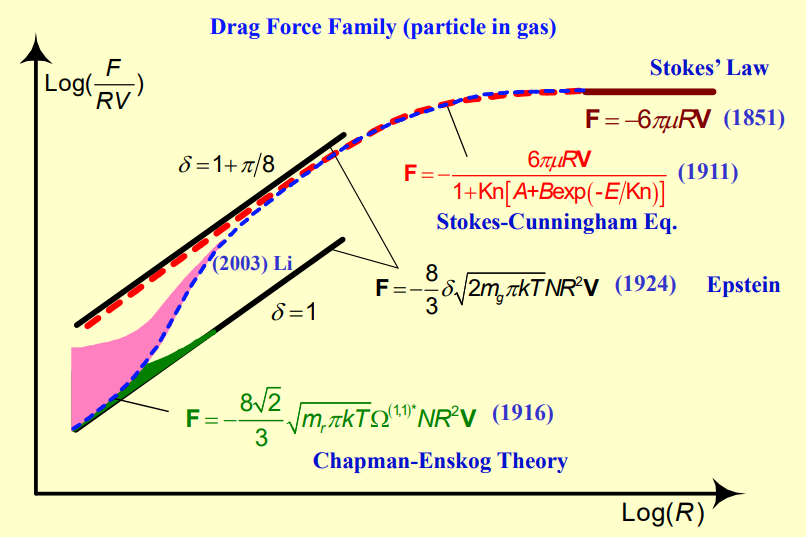Large Particles
“Creeping flow” occurs when the Reynolds number . This is characteristic of very slow-moving particles, high-viscosity fluids, or small particles in a viscous medium.
In this regime, Stokes’ Law describes the drag force
where is the drag force, is the dynamic viscosity of the gas, is the radius of the particle, and is the relative velocity of the particle. This is primarily valid for macroparticles.
Small Particles
When particles approach the scale of the mean free path of gas molecules, assumptions of Stokes’ Law break down.
- Mean free path – average distance a molecule travels before colliding with another
For these small particles, we instead have some function
which adjusts for molecular effects.
The behavior of is influenced by the Knudsen number , which is defined as
where is the mean free path of the gas molecules and is the radius of the particle.
Interpretation of :
- – Continuum regime; the particle is much larger than the mean free path, the fluid behaves like a continuous medium. Stokes’ Law is valid
- – Transition regime; The particle size is comparable to the mean free path. Molecular slip starts to become important. Stokes’ Law needs correction
- – Free molecule regime; The particle is smaller than the mean free path. Molecules do not collide much with each other; they mostly interact with the particle. The drag force is dominated by direct molecular impacts.
Evolution of drag force models as particles become smaller and enter different flow regimes:
